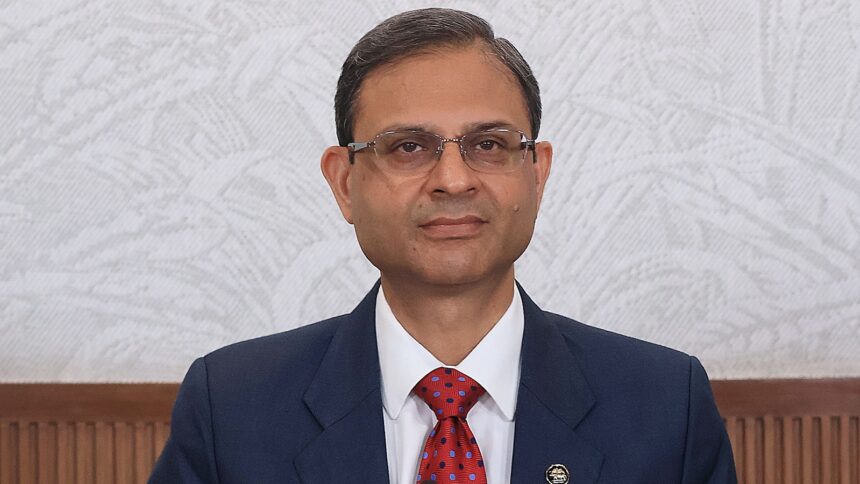RBI MPC Meeting Announcements June 2025: The Reserve Bank of India’s six-member Monetary Policy Committee (MPC) has slashed the repo rate by a bigger-than-expected 50 basis points to 5.50 per cent, marking the third consecutive reduction since February 2025. The MPC move aims to boost growth prospects as inflation remains below the 4 per cent target. The rate cut will benefit borrowers, especially home loans, while depositors and savers can expect lower returns on their bank deposits in the coming months.
The central bank also cut the cash reserve ratio of banks by 100 basis points to 3 per cent, releasing Rs 2.5 lakh crore of lendable resources to the banking system.
The MPC, headed by RBI Governor Sanjay Malhotra, has changed its policy stance from ‘accommodative’ to ‘neutral’ in a bid to support economic growth. This RBI’s rate cut decision is expected to stimulate borrowing and investment, leading to a higher growth rate. The policy panel retained growth estimate at 6.5 per cent but projected a lower of 3.7 per cent in the current fiscal.
The main factor that led to the 50 bps rate cut is the fall in retail inflation. Headline inflation, as measured by year-on-year changes in the all-India consumer price index (CPI), moderated to 3.2 per cent in April, the lowest since July 2019, from 3.3 per cent in March. The easing in CPI has been driven by the sustained fall in food prices.
Economists said that with inflation remaining below the 4 per cent target in the last three months (February, March and April), and a sharp fall in food inflation, CPI is likely to durably align with the 4 per cent target over a 12-month period, paving the way for further rate cuts. Under the flexible inflation targeting (FIT) framework, the RBI has been mandated by the government to maintain CPI at 4 per cent with a band of +/-2 per cent.
Further, the RBI had estimated the GDP growth to be at only 6.5 per cent in the current fiscal at a time when the trade tariff issues with the US have created some uncertainty on the economic front. “MPC felt that core inflation is expected to remain benign. Frontloading of rate cut will support growth… it’s imperative,” Malhotra said.
As the Repo rate has been reduced by 50 bps, all external benchmark lending rates (EBLR) linked to it will decline by a similar margin. It would be a relief for borrowers as their equated monthly instalments (EMIs) on home and personal loans will drop by 50 bps.
Earlier, following a 50 bps cut in the repo rate since February 2025, most banks reduced their repo-linked lending rates by the same magnitude. Lenders have also lowered their marginal cost of funds-based lending rate (MCLR).
Banks are also expected to reduce the deposit rate in the wake of the reduction in lending rate. This will impact savers and depositors who will see their returns declining.
The rate cut is likely to benefit the bond market, as falling interest rates typically lead to a rise in bond prices. Yields, especially on government securities, may decline further, enhancing returns for existing bondholders and boosting demand for fixed-income assets.
Potential borrowers could see their EMIs decrease in the order of Rs 800-1,200 per lakh depending on whether they are on a floating-rate loan, and it would immediately improve their liquidity. However, deposit rates could go down from already near record levels of 2.7 per cent on savings for conservative savings which could compromise savers.
The RBI also revised its projections on real gross domestic product (GDP) and inflation for FY2026.
As per the RBI’s estimate, CPI inflation for 2025-26 is expected to be lower at 3.7 per cent as against 4 per cent estimated earlier. The easing of supply chain pressures, softening of global commodity prices and higher agricultural production on the back of a likely above-normal south-west monsoon augur well for the inflation outlook in 2025-26.
The real GDP growth for 2025-26 is projected at 6.5 per cent. In the quarter ended January-March 2025, the domestic economy picked up pace and grew at a four-quarter high of 7.4 per cent. For the financial year 2024-25, the growth rate stood at 6.5 per cent, which was a four-year low.
“The Indian economy is poised to sustain its position as the fastest growing major economy during 2025-26, supported by pickup in private consumption, healthy balance sheets of banks and corporates, easing financial conditions and the government’s continued thrust on capital expenditure,” the RBI’s annual report said.








